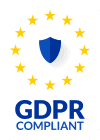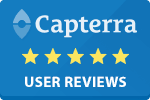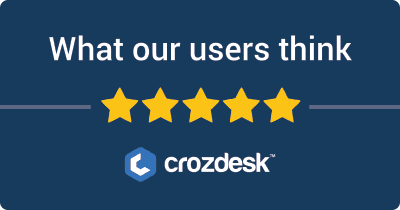
Moosend and Constant Contact are two prominent players in the realm of email automation software, each catering to the unique needs of businesses looking to enhance their email marketing efforts.
Both tools aim to simplify the process of creating, managing, and analyzing email campaigns, making them highly regarded choices among marketers. Users commonly consider Moosend for its affordability and user-friendly interface, while Constant Contact is often favored for its robust features and extensive customer support.
Key comparison aspects include:
- Features: Investigate the range of tools available for designing emails, segmenting audiences, and automating workflows.
- Pricing: Evaluate the cost structures of both platforms, including any tiered pricing options and value for money.
- Ease of Use: Consider the learning curve associated with each tool and how intuitive their interfaces are, particularly for beginners.
- Customer Support: Examine the availability and effectiveness of support resources offered, such as guides, tutorials, and live assistance.
This analysis helps users make informed decisions based on their specific marketing needs and business goals.
Moosend VS Constant Contact: Which tool is the most popular?
| Tool | Review Count | Average Rating | Positive Reviews | Neutral Reviews | Negative Reviews |
|---|---|---|---|---|---|
| Moosend | 10 | 5.0 | 10 | 0 | 0 |
| Constant Contact | 247 | 2.21 | 73 | 2 | 172 |
Moosend is the most popular tool based on user ratings, with an average rating of 5.0 from 10 reviews, all of which are positive. In contrast, Constant Contact has the least favorable reception, receiving an average rating of 2.21 from 247 reviews, with a significant number of negative feedback.


Moosend and Constant Contact: Quick Comparison Overview
| Feature/Aspect | Ahrefs | SEMrush |
|---|---|---|
| Primary Features | – Site Explorer – Keyword Explorer – Backlink Checker – Content Explorer – Rank Tracker |
– Keyword Research – Site Audit – Position Tracking – Content Analyzer – Marketing Insights |
| Target Audience | – SEO professionals – Digital marketers – Agencies focusing on content marketing and backlink analysis |
– Digital marketers – SEO experts – Content marketers – Social media marketers and PPC specialists |
| Main Advantages | – Robust backlink analysis – Comprehensive keyword data – Intuitive user interface – Constantly updated index |
– All-in-one digital marketing tool – Extensive competitor analysis – Wide array of tools for SEO and PPC – Integrated social media management |
| Core Value Proposition | Focused on providing in-depth SEO insights, particularly strengths in backlink profiles and organic keyword rankings. Ideal for users prioritizing content strategy and link-building efforts. | Offers a holistic view of digital marketing, making it easier to manage all aspects of online presence through an extensive range of tools for SEO, PPC, and social media marketing. |
| Ideal Use Cases | – Conducting comprehensive link audits – Developing effective content strategies – Tracking backlinks and organic rankings – Keyword planning for SEO campaigns |
– Managing and optimizing PPC campaigns – Conducting competitive analysis for market positioning – Comprehensive content analytics and SEO tracking – Social media metrics and management |
Most liked vs most disliked features of Moosend and Constant Contact
| Feature | Moosend | Constant Contact |
|---|---|---|
| Most Liked Features | – Economical pre-paid credit system | – Effective and available customer support |
| – User-friendly navigation and campaign creation | – Intuitive platform once familiar | |
| – Responsive live chat support | – Attentive technical support | |
| – E-commerce automations for customer engagement | – Consistent service quality over the years | |
| – Strong deliverability rates | – Noted improvements and follow-ups | |
| Most Disliked Features | – Absence of phone support | – Long wait times and unhelpful representatives |
| – Desire for more advanced features | – Inconvenient cancellation process via phone | |
| – High costs for small businesses | ||
| – Technical issues affecting email functionalities | ||
| – Unclear communication about account and billing |
Key Features of Moosend vs Constant Contact
Key Features of Moosend and Constant Contact for Email Automation Software
Moosend
-
Email Campaign Automation:
- Benefit: Users can create automated campaigns based on subscriber behavior, allowing for timely and relevant communication.
- Unique Aspect: Moosend allows users to set up complex automation workflows with a drag-and-drop editor, enabling both novices and advanced marketers to tailor their automation processes effectively.
-
Landing Pages:
- Benefit: Users can create custom landing pages to capture leads, enhancing their marketing funnel.
- Unique Aspect: Moosend provides a landing page builder with templates that require no coding skills, which makes it accessible for users without technical backgrounds.
-
Segmentation and Personalization:
- Benefit: It allows marketers to send targeted emails to specific segments of their audience, improving engagement rates.
- Unique Aspect: Moosend supports advanced segmentation options, including behavioral and demographic segmentation, to cater messages effectively.
-
Analytics and Reporting:
- Benefit: In-depth reporting helps users track campaign performance, optimize their strategies, and improve ROI.
- Unique Aspect: Moosend offers real-time analytics and report generation, making it easy for users to gauge performance instantly.
-
A/B Testing:
- Benefit: Users can test different versions of their emails to identify which performs better, ensuring higher engagement.
- Unique Aspect: The flexibility in testing various elements like subject lines, CTAs, and images is straightforward, allowing users to quickly implement best practices.
-
Subscriber Management:
- Benefit: Easy handling of subscriber lists aids in maintaining healthy email marketing practices.
- Unique Aspect: Moosend uses AI-driven suggestions for list management, helping users improve their email hygiene with minimal effort.
Constant Contact
-
Email Templates:
- Benefit: Users can choose from a wide variety of professionally designed templates, saving time building newsletters.
- Unique Aspect: Constant Contact features a library of customizable templates that cater to different industries, making it easy for businesses to find a suitable option.
-
Event Marketing:
- Benefit: Integrates event management tools to promote events and manage registrations directly through email campaigns.
- Unique Aspect: Constant Contact’s event marketing capabilities stand out as this feature includes RSVP tracking and integration with platforms like Facebook.
-
Social Media Tools:
- Benefit: Users can share their email campaigns across social media platforms, broadening their reach.
- Unique Aspect: Constant Contact offers tools to create social media ads directly linked to email campaigns, creating a seamless marketing experience.
-
List Growth Tools:
- Benefit: Tools designed to help businesses grow their contact lists easily through signup forms, surveys, and polling.
- Unique Aspect: Constant Contact features a unique “Lead Generation” tool, which integrates with multiple platforms including social media, to attract new subscribers.
-
Customer Support:
- Benefit: Provides assistance via multiple channels including email, chat, and phone, helping users resolve issues quickly.
- Unique Aspect: Constant Contact emphasizes customer service with free one-on-one coaching sessions for new users to enhance their email marketing strategies.
-
E-commerce Integration:
- Benefit: Direct integration with e-commerce platforms allows users to tailor emails based on purchase behaviors.
- Unique Aspect: Constant Contact specifically supports e-commerce retailers with features that allow for product recommendations based on customer behavior.
Conclusion
Both Moosend and Constant Contact offer robust features that cater to differing user needs in email automation. Moosend leans heavily into automation capabilities, advanced segmentation, and real-time reporting, making it highly suitable for data-driven marketers. In contrast, Constant Contact excels in user-friendly templates, social media integration, and personalized customer support, catering well to small to medium-sized businesses looking for comprehensive marketing solutions.
Moosend vs Constant Contact Pricing Comparison
| Feature/Plan | Moosend (Monthly Pricing) | Moosend (Annual Pricing) | Constant Contact (Monthly Pricing) | Constant Contact (Annual Pricing) |
|---|---|---|---|---|
| Free Plan | Yes, up to 1,000 subscribers | N/A | Yes, 60 days full features | N/A |
| Basic Plan | $9/month (up to 1,000 subscribers) | $8/month (billed as $96/year) | $12/month (up to 500 subscribers) | $10/month (billed as $120/year) |
| Pro Plan | $16/month (up to 1,000 subscribers) | $13/month (billed as $156/year) | $35/month (up to 500 subscribers) | $30/month (billed as $360/year) |
| Enterprise Plan | Custom pricing | Custom pricing | Custom pricing | Custom pricing |
| Features in Basic Plan | Email campaigns, sign-up forms, landing pages, automation workflows, reporting | Same as monthly plan | Email campaigns, sign-up forms, basic reporting | Same as monthly plan |
| Features in Pro Plan | All Basic features + advanced automation, templates, segmentation, dynamic content | Same as monthly plan | All Basic features + advanced email tools, social media posting | Same as monthly plan |
| Key Differences | More comprehensive features available at lower tiers, unlimited emails | Significant annual savings on monthly plans | Higher starting price for smaller lists; features are tiered based on subscriber count | Minor savings on annual commitment |
| Discounts | 20% off with annual plans | N/A | 30% off first 3 months for new customers | 15% off with annual commitment |
Summary of Offerings
- Moosend provides a free plan and strong tiered pricing for basic and pro options, with lower starting prices and rich automation features.
- Constant Contact offers a free trial for 60 days, with higher base pricing and a focus on integrated email and social features, but less flexibility in subscriber numbers at lower tiers.
Support Options Comparison: Moosend vs Constant Contact
| Support Feature | Moosend | Constant Contact |
|---|---|---|
| Live Chat | Available during business hours. | Available during business hours. |
| Phone Support | No direct phone support. | Provided; available during business hours. |
| Documentation | Comprehensive knowledge base and FAQs available online. | Extensive help articles and FAQs provided. |
| Webinars | Offers on-demand webinars covering various topics. | Regular live and recorded webinars available. |
| Tutorials | Step-by-step guides and tutorials included in the documentation. | Wide range of tutorials, including videos and guides. |
Summary:
Moosend and Constant Contact both provide live chat support during business hours, allowing users to seek immediate assistance. However, Constant Contact stands out with the availability of direct phone support.
In terms of documentation, both platforms offer extensive resources; Moosend features a detailed knowledge base, while Constant Contact provides a combination of articles and FAQs.
Additional resources like webinars are prominent for both services, with Moosend offering on-demand sessions and Constant Contact hosting regular live and recorded webinars. Furthermore, both platforms include a wealth of tutorials to aid user understanding and product utilization.
Unique Features of Moosend Vs Constant Contact
| Feature | Moosend | Constant Contact | Added Value and Decision Factors |
|---|---|---|---|
| AI-Powered Recommendations | Offers personalized product recommendations based on user behavior, utilizing artificial intelligence. | Lacks sophisticated AI-driven personalization tools. | Enhances customer experience and increases sales through tailored suggestions, appealing to e-commerce businesses. |
| Interactive Email Builder | Provides an advanced drag-and-drop email editor with interactivity, allowing for custom animations and dynamic content. | Basic email builder with limited interactive features. | Engages recipients more effectively, boosting open and click-through rates, which is vital for marketing campaigns. |
| Landing Page Builder | Integrated landing page builder that allows users to create landing pages within the platform. | No native landing page builder; relies on third-party tools. | Simplifies workflow by eliminating the need for external tools, facilitating quicker campaign launches and better tracking of conversions. |
| Web Push Notifications | Includes web push notifications as part of its marketing automation suite. | Does not offer web push notifications. | Increases customer engagement through direct notifications, enhancing re-engagement strategies outside of email. |
| Segmentation & Targeting | Offers detailed segmentation options, allowing users to target specific demographics and behaviors dynamically. | Segmentation features present but less advanced. | Enables effective targeting of campaigns, improving relevance and conversion rates for specific audience segments. |
| Analytics & Reporting | Provides in-depth analytics with real-time data tracking, including heatmaps for email performance. | Standard analytics capabilities without heatmap functionality. | Superior insights into user interactions help marketers optimize campaigns for better performance. |
| Subscription Forms & Pop-ups | Features customizable subscription forms and pop-ups for lead generation on websites. | Basic forms available but less customization. | Boosts lead generation with tailored forms that align with branding, increasing potential customer acquisition. |
| Credit System for Add-ons | Flexible credit-based system for purchasing additional features or services. | Standard tiered pricing model with less flexibility. | Allows users to customize their service use based on needs, enhancing budget management for businesses. |
This table outlines the distinctive features of Moosend and Constant Contact that set them apart in the landscape of email automation software. The added value of these features not only enhances user experience and engagement but also acts as a crucial factor for businesses when selecting a platform that aligns with their marketing objectives.


